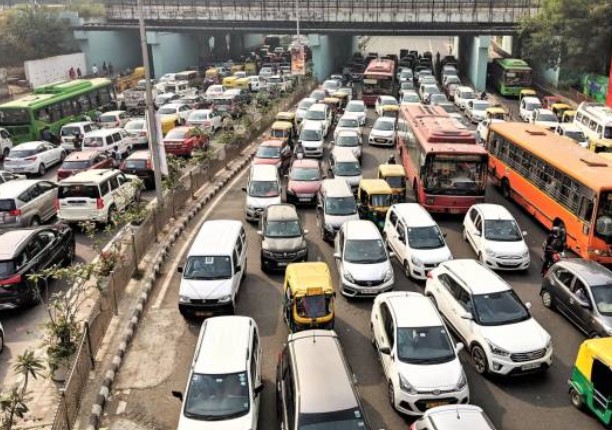India old vehicle bans: As Indian cities choke under worsening air quality, the government’s latest strategy—banning old petrol and diesel vehicles—has triggered equal measures of policy optimism and fiscal anxiety. On paper, the move aims to cut vehicular emissions, one of the main contributors to urban smog. But for state governments, the more immediate worry is revenue. The fiscal losses from phasing out internal combustion engine (ICE) vehicles could prove larger, and far more certain, than the long-term and less assured health gains.
India’s fiscal system is built on fuel taxes. In 2018–19, petrol and diesel levies yielded ₹5.76 lakh crore, with about 40% going to state treasuries. For many states, such taxes account for 15–20% of total revenues. This reliance now looks fragile. Electric vehicles (EVs), compressed natural gas (CNG), and policy bans on older ICE vehicles are beginning to erode demand for petrol and diesel.
READ | India’s agriculture crisis deepens amid tariff war
The numbers highlight the risk. In 2021–22, India consumed 30.85 million tonnes of petrol and 76.69 million tonnes of diesel—fuels that powered not just mobility but state budgets. In Delhi, diesel sales fell 9% in FY 2024–25, driven by stricter rules and rising adoption of EVs and CNG. The shift is quickening. EVs accounted for nearly 5% of all vehicle sales between October 2022 and September 2023, and analysts forecast over 40% penetration by 2030. Some segments are moving even faster: electric three-wheelers doubled their share from 12.6% to 22.8% within FY 2024–25.
Revenue shock on the horizon
This transformation, while environmentally necessary, threatens to upend public finances. If EVs capture 30% of the market by 2030, state petroleum tax revenues could fall by 15–31%, according to estimates. At the central level too, excise duties on petrol and diesel—worth around ₹49,000 crore annually—face a steady decline. The fiscal hit is inevitable; the environmental dividend is less certain.
The effectiveness of bans on older vehicles is far from guaranteed. Mexico City’s strict restrictions failed to improve air quality measurably. Indian cities that experimented with odd-even traffic rules during smog episodes also recorded only modest gains, with PM2.5 and nitrogen dioxide levels largely unaffected.
Europe’s results are mixed. Birmingham’s Clean Air Zone yielded limited improvements in nitrogen dioxide and none in PM2.5, though it raised £79 million in charges. London’s Ultra Low Emission Zone (ULEZ) fared better: nitrogen dioxide levels fell 13% and PM2.5 dropped 29%. But this was achieved only because the city coupled the scheme with heavy investments in public transport and scrappage subsidies.
India risks faltering where Europe succeeded. Without investments in buses, metro networks, scrappage programmes, and affordable EV alternatives, blanket bans may hurt the poor and middle class disproportionately. The fiscal consequences, meanwhile, will be universal.
Building a new revenue model
Governments need to rethink transport taxation. A shift from fuel excise to usage-based taxes could provide a fairer system. Charging vehicle owners per kilometre travelled would preserve revenues even as EVs grow. Commercial EV charging could carry moderate electricity duties, creating a pool of funds earmarked for clean-air initiatives and road upkeep.
Targeted scrappage incentives can help owners retire polluting vehicles while softening the economic blow. And the bigger vision should be to invest heavily in public transport, cycling lanes, and pedestrian infrastructure—reducing private vehicle dependence altogether.
Vehicle bans vs a phased transition
Rather than blanket bans, regulators could phase out only the worst offenders using mandatory fitness tests, emission audits, and digital surveillance tools. Such a calibrated approach would ease the transition, preserve equity, and prevent fiscal collapse.
The question is not whether old vehicles should be banned, but whether bans are pursued with a full grasp of their fiscal and social impact. Policymakers must weigh certain revenue losses against uncertain health gains. Without a parallel revenue framework and serious investment in public transport, India risks swapping one crisis for another.
Clean air is essential. But so is a functioning state budget. The real challenge is to design policies that secure both. That calls for nuance, balance, and foresight—qualities that must anchor India’s march towards a greener, financially sustainable future.
Dr Santhosh Kumar PK is Director, Centre for Budget Studies, Faculty of Social Science, Cochin University of Science and Technology.

